The waters off Oregon’s coastline harbor some of nature’s most extraordinary secrets. Beneath the churning surface of the Pacific Ocean, where sunlight fades to an eternal midnight, a hidden universe thrives. Oregon’s continental shelf drops dramatically into the abyss, creating unique habitats that support marine life so bizarre they seem more like science fiction than biology. From bioluminescent marvels to near-transparent oddities, these deep-sea denizens have evolved remarkable adaptations to survive in one of Earth’s most extreme environments. Recent scientific expeditions and underwater explorations continue to unveil these mysterious creatures, expanding our understanding of marine biodiversity and the delicate ecosystems that exist in the crushing depths off Oregon’s shores.
The Astoria Canyon: A Deep-Sea Biodiversity Hotspot
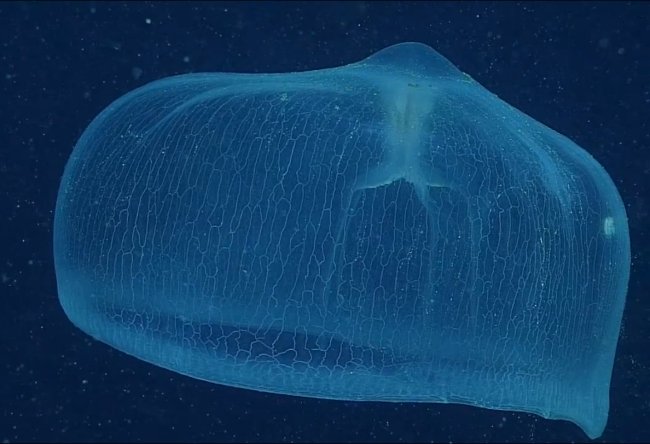
Located approximately 10 miles offshore from the Columbia River’s mouth, the Astoria Canyon serves as one of Oregon’s premier deep-sea biodiversity hotspots. This submarine canyon plunges to depths exceeding 6,000 feet, creating dramatic topography that generates nutrient-rich upwellings and diverse microhabitats. Scientists from Oregon State University and NOAA have documented over 200 species in this single canyon system, many displaying extraordinary adaptations to the extreme pressure, cold, and darkness. The canyon’s steep walls and varied substrate types—from rocky outcrops to muddy plains—provide niches for specialized creatures rarely observed elsewhere. Recent expeditions using ROVs (Remotely Operated Vehicles) have revealed communities of cold-water corals, sponges, and numerous fish species that create a complex ecosystem far from human eyes.
Vampire Squid: Neither Vampire Nor Squid

Perhaps the most enigmatic resident of Oregon’s deep waters is the Vampire Squid (Vampyroteuthis infernalis), whose scientific name literally translates to “vampire squid from hell.” Despite its intimidating moniker, this ancient creature is neither a true squid nor an octopus, but the sole surviving member of its own order, Vampyromorphida. Found at depths between 2,000-3,000 feet off Oregon’s coast, the Vampire Squid has evolved to thrive in the oxygen minimum zone where few predators venture. Its most remarkable feature is the webbing that connects its eight arms, creating a cloak-like appearance that inspired its vampiric name. When threatened, it can turn itself inside out, displaying rows of spiny projections that make it appear larger to potential threats. Unlike its relatives, the Vampire Squid doesn’t hunt live prey but subsists on marine snow—organic debris that drifts down from surface waters—collecting it with two retractile filaments that can extend to eight times the animal’s body length.
Barreleye Fish: The Fish with a Transparent Head
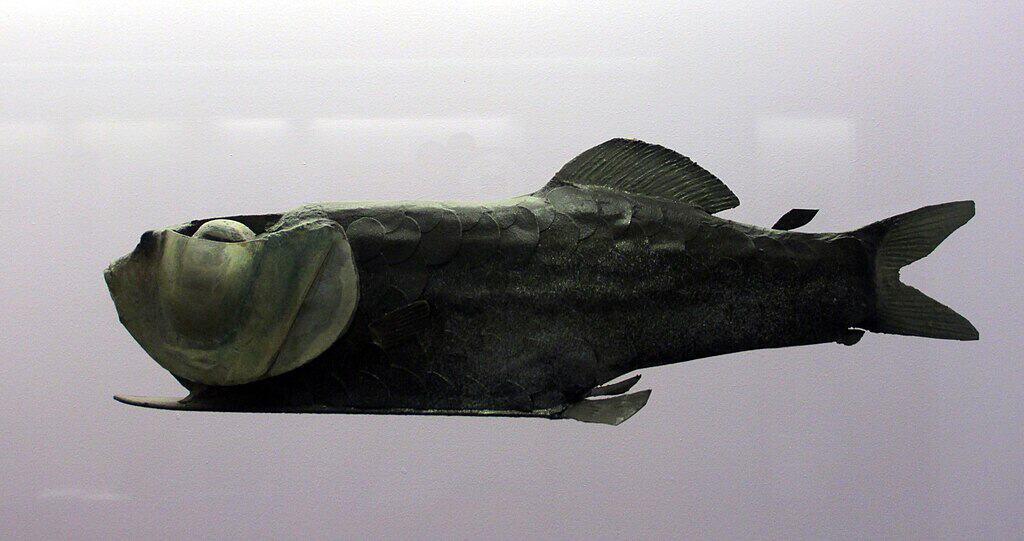
In 2009, MBARI researchers working off the Oregon coast captured incredible footage of one of the ocean’s most unusual adaptations: the Barreleye fish (Macropinna microstoma). This deep-sea dweller possesses a transparent dome-like head filled with fluid, through which its tubular, highly sensitive eyes can be seen. These specialized eyes can rotate within the transparent shield, allowing the fish to look upward for potential prey silhouetted against the faint light from above, then pivot to look forward as it swims toward its target. The Barreleye typically hovers motionless in the water column at depths of 2,000-2,600 feet, waiting to spot the faint shadows of small crustaceans. Scientists believe the transparent head also serves as protection for the delicate eyes from the stinging tentacles of siphonophores, from which the Barreleye may steal prey. Remarkably, specimens brought to the surface previously showed damaged head tissue, leading researchers to mistakenly believe the head was permanently open until live observations revealed the intact transparent dome.
Dumbo Octopus: The Deep-Sea Elephant
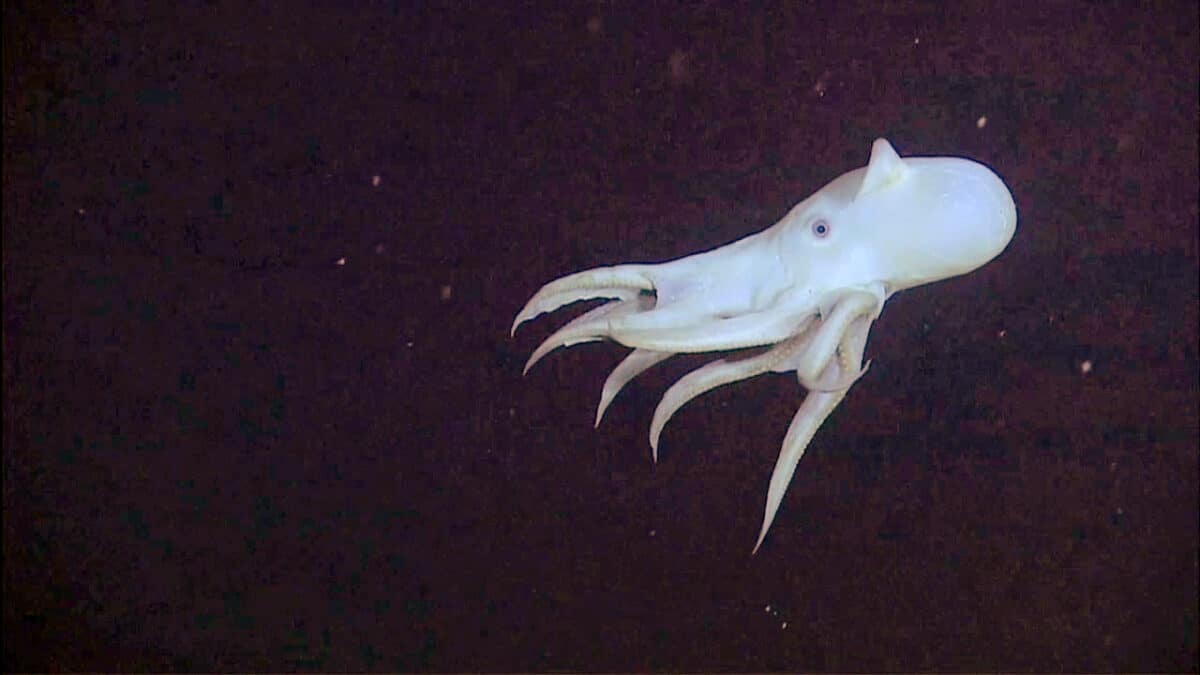
Named for their resemblance to Disney’s flying elephant, Dumbo octopuses (family Grimpoteuthis) are some of the deepest-dwelling octopuses known to science. These charismatic cephalopods have been documented at depths exceeding 13,000 feet off Oregon’s continental slope. Their most distinctive feature is the pair of ear-like fins protruding from the top of their mantle, which they use to propel themselves through the water with a graceful, almost ballet-like movement. Unlike shallow-water octopuses that crawl along the seafloor, Dumbo octopuses are primarily adapted for life in the water column, though they occasionally touch down on the seabed to forage. Their bodies lack the ink sacs common to other cephalopods—an unnecessary defense in the lightless deep—and their eight arms are connected by an extensive web that gives them an umbrella-like appearance. Oregon State University researchers have identified at least three different Dumbo octopus species in Oregon waters, contributing to our understanding of these gentle giants that typically grow to about 12 inches in length.
Yeti Crab: Hairy Denizens of Hydrothermal Vents

The Yeti Crab (Kiwa hirsuta) represents one of the most bizarre discoveries from Oregon’s hydrothermal vent systems along the Juan de Fuca Ridge. First documented in 2005, these unusual crustaceans are characterized by their ghostly white appearance and arms covered in dense, hair-like setae. Far from being merely decorative, these “hairs” serve a crucial biological function. The Yeti Crab cultivates filamentous bacteria on its setae, then combs these bacteria toward its mouth using specialized appendages—essentially “farming” its own food source. This symbiotic relationship allows the crab to thrive in the nutrient-poor deep sea by creating its own sustainable food supply. Oregon’s offshore hydrothermal vents, where temperatures can exceed 700°F, create unique chemical environments that support these specialized creatures. Recent studies by Oregon State University marine biologists have revealed that different species of Yeti Crabs have evolved to occupy specific temperature gradients around vents, demonstrating how even in the most extreme environments, life finds ways to diversify and specialize.
Black Devil Anglerfish: Master of Deep-Sea Deception
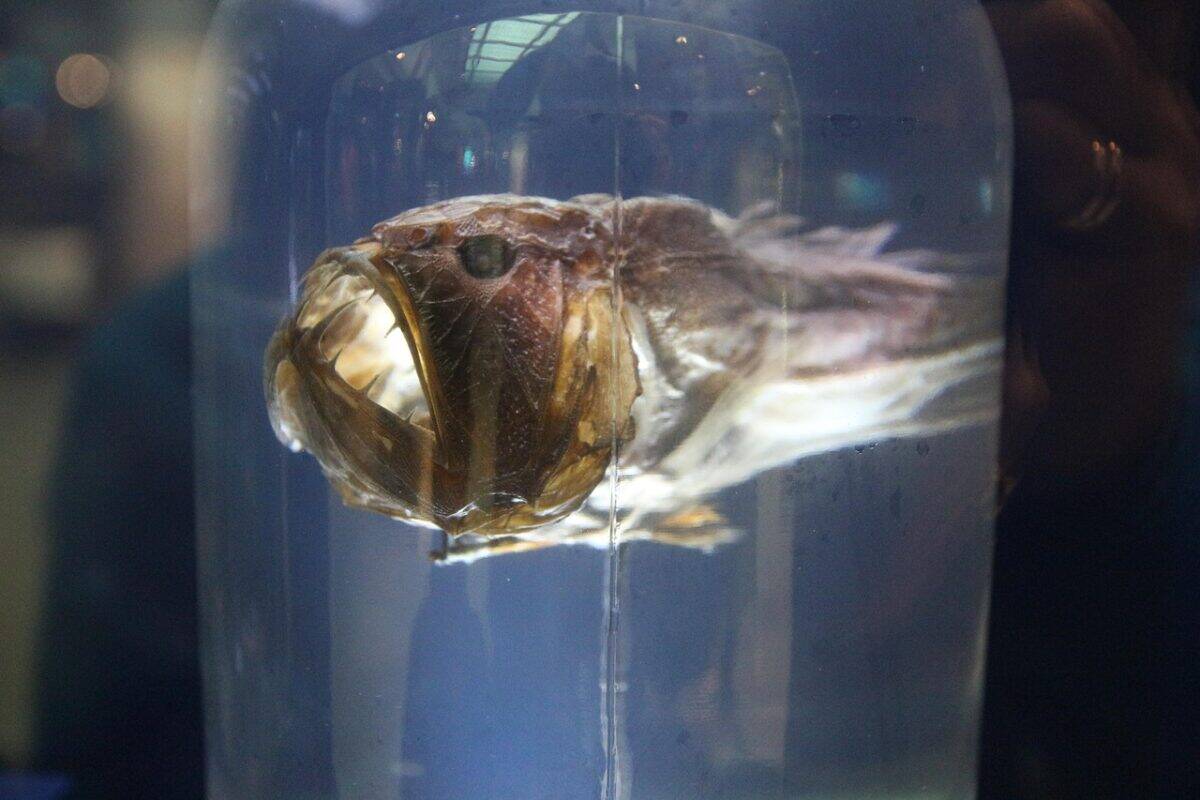
Among the most fearsome-looking inhabitants of Oregon’s deep waters is the Black Devil Anglerfish (Melanocetus johnsonii), a species perfectly adapted for life in the perpetual darkness. Unlike their relatives that dwell on the seafloor, these anglerfish are bathypelagic, meaning they live suspended in the water column at depths between 3,000-9,000 feet. Their most notable feature is the bioluminescent lure that extends from their forehead—actually a modified dorsal spine containing light-producing bacteria. This natural fishing rod dangles in front of the anglerfish’s enormous jaws, attracting curious prey that mistake the glowing tip for a potential meal. What makes Oregon’s anglerfish population particularly interesting to researchers is their extreme sexual dimorphism; females can reach sizes of up to 8 inches, while males are tiny parasites, sometimes less than half an inch long. When a male finds a female, he permanently attaches to her body, eventually fusing his circulatory system with hers and becoming little more than reproductive tissue. A single female may host multiple attached males, ensuring she has sperm available whenever she’s ready to reproduce in the sparsely populated deep.
Goblin Shark: Living Fossil of the Abyss

The Goblin Shark (Mitsukurina owstoni) represents one of the rarest and most primitive shark species occasionally encountered in Oregon’s deep waters. This living fossil, with lineage dating back 125 million years, features a distinctively elongated, flattened snout and protrusible jaws that can rapidly extend forward to capture prey in a motion reminiscent of the alien creature from science fiction films. Commercial fishermen working Oregon’s continental slope have occasionally brought up specimens from depths of 3,000-4,000 feet, providing valuable scientific data on this elusive species. The Goblin Shark’s pale pinkish-gray coloration comes from blood vessels visible through its semi-transparent skin—an adaptation to life in the deep sea where pigmentation offers little advantage. Scientists studying these rare specimens have discovered specialized electroreceptive organs in the shark’s elongated snout that allow it to detect the electrical fields generated by nearby prey, even in complete darkness. With a slow metabolism adapted to the cold, food-scarce environment of the deep sea, Goblin Sharks may live for decades, though exact lifespans remain unknown due to their rarity and the difficulty of studying them in their natural habitat.
Giant Isopods: Superdimensional Roly-Polies

Looking like enormously magnified versions of the backyard roly-poly or pill bug, Giant Isopods (Bathynomus giganteus) are one of the most recognizable deep-sea creatures found off Oregon’s coast. These crustaceans, related to common woodlice, can grow to over a foot long and represent a classic example of deep-sea gigantism—the tendency for some deep-sea invertebrates to evolve much larger sizes than their shallow-water relatives. Oregon’s continental slope provides ideal habitat for these scavengers, which patrol the seafloor at depths of 2,000-7,000 feet in search of fallen carcasses and other organic material. Their robust exoskeletons can withstand the intense pressure of the deep sea, while their compound eyes—though small relative to their body size—are sensitive enough to detect the faintest light signals from bioluminescent organisms. Giant isopods have evolved remarkable adaptations for survival in food-scarce environments; they can go years between meals, dramatically slowing their metabolism and living off stored fat reserves. Oregon State University researchers studying these creatures have documented how they play a crucial role in deep-sea ecosystems, quickly locating and consuming fallen marine organisms and thus participating in the ocean’s carbon cycling.
Fangtooth Fish: Record-Holders for Tooth-to-Body Ratio
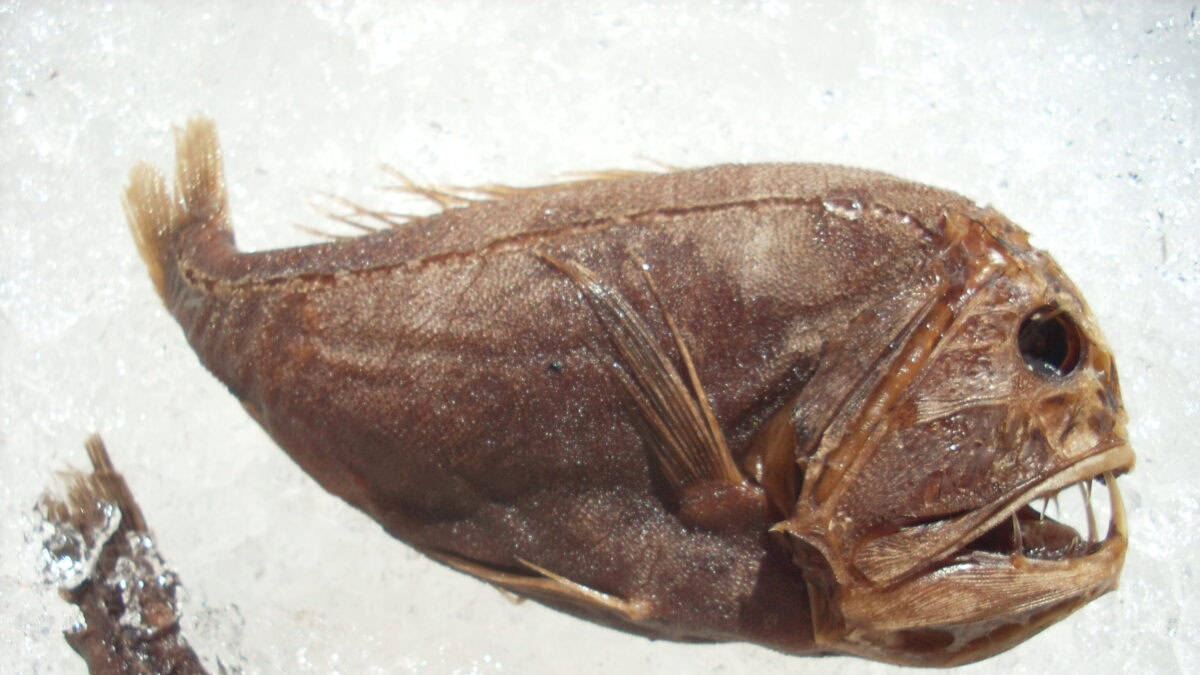
With the largest teeth proportional to body size of any fish in the ocean, the Fangtooth (Anoplogaster cornuta) presents a fearsome appearance that belies its relatively small size of about 6 inches. These deep-sea predators, found between 1,500-6,500 feet off Oregon’s coast, possess specialized jaw sockets that allow their disproportionately large teeth to fit inside their mouths when closed. Despite their monstrous appearance, fangtooth fish primarily hunt smaller fish and crustaceans, using their sensitive lateral line system to detect prey movements in the darkness. Oregon oceanic research stations have documented seasonal vertical migrations of these fish, which move into slightly shallower waters during night hours to feed, then return to deeper waters during daylight. Their bodies are adapted for life under extreme pressure, with reduced gas bladders and reinforced skeletons that prevent compression sickness when traveling through different depth zones. The fangtooth’s specialized liver stores large amounts of lipids that provide both buoyancy and energy reserves for times when prey is scarce. Recent deep-sea camera traps deployed by NOAA expeditions off Oregon have captured rare footage of fangtooth fish hunting behavior, showing how they use burst swimming to ambush prey before rapidly clamping down with their signature teeth.
Viperfish: Bioluminescent Predator of the Twilight Zone

The Pacific Viperfish (Chauliodus macouni) represents one of the most visually striking predators of Oregon’s mesopelagic zone—the “twilight” region between 660-3,300 feet where sunlight fades to darkness. This fearsome-looking fish, growing to about 12 inches in length, possesses needle-like teeth so long they cannot fit inside the mouth when closed, instead curving back against the fish’s face. What makes Oregon’s viperfish population particularly fascinating is their complex pattern of bioluminescence. Photophores (light-producing organs) line their undersides in a pattern that creates counter-illumination, breaking up their silhouette when viewed from below. Additionally, a specialized light organ on an extended dorsal ray acts as a lure, attracting smaller fish within striking distance. Oregon State University’s deep-sea research vessels have documented how viperfish undergo daily vertical migrations, ascending hundreds of meters at night to feed in more productive waters, then descending to darker depths during daylight to avoid predation. Their bodies contain specialized proteins that function as antifreeze, allowing them to withstand the near-freezing temperatures of the deep sea. Despite their fearsome appearance, viperfish are themselves prey for larger deep-sea predators like dragonfish and squid, forming an important link in the deep ocean food web off Oregon’s coast.
Deepstaria Jellyfish: The Living Plastic Bag
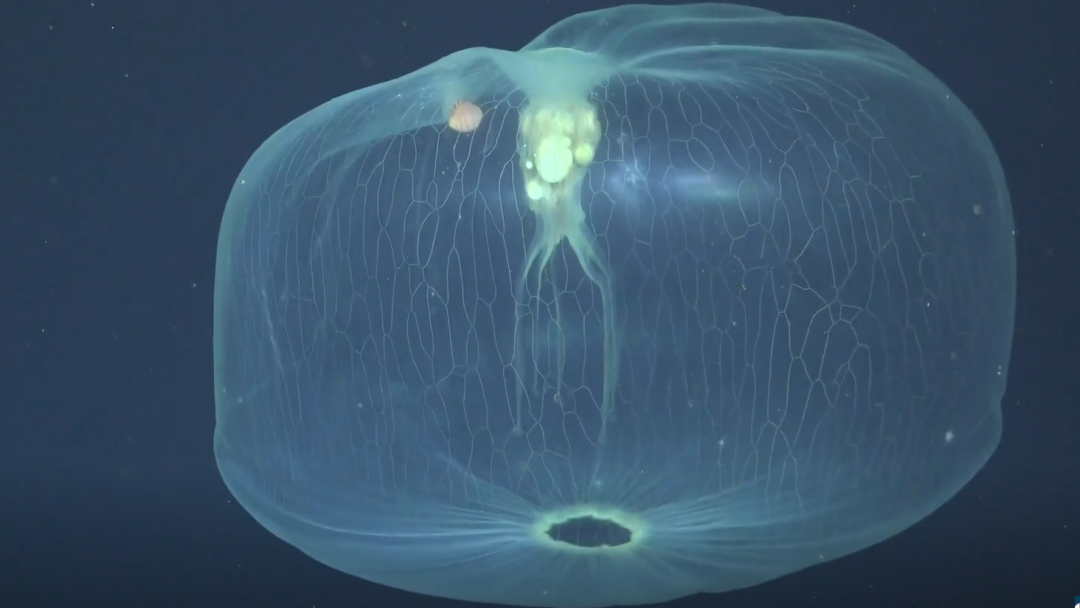
One of the most otherworldly creatures documented in Oregon’s deep waters is the Deepstaria enigmatica, a rare jellyfish whose thin, sheet-like bell resembles a translucent plastic bag. Unlike typical jellyfish that pulse to propel themselves, the Deepstaria adopts a more passive hunting strategy. Its entire bell can expand to engulf prey, trapping anything that touches its thin membrane against the intricate network of canals that line its interior. First filmed in the early 2000s by deep-sea submersibles off the Oregon coast, these jellies typically live at depths between 2,400-4,800 feet. What makes them particularly unusual is their ability to dramatically change shape—contracting to a compact form when disturbed or expanding to a bell over three feet across when feeding. The Deepstaria’s life cycle remains largely mysterious to science, with reproduction and juvenile stages still poorly documented. Oregon’s deep submarine canyons, with their stable temperature conditions and gentle currents, provide ideal habitat for these delicate creatures. Recent ROV explorations have revealed that Deepstaria jellyfish often host symbiotic isopods inside their bells—small crustaceans that may help clean the jellyfish while gaining protection and feeding opportunities from their host.
Exploring the Unexplored: Ongoing Deep-Sea Research in Oregon

Oregon represents a center of excellence for deep-sea exploration and research, with institutions like Oregon State University, NOAA’s Pacific Marine Environmental Laboratory, and the Oregon Institute of Marine Biology leading cutting-edge studies. Current research employs a sophisticated array of technologies—from autonomous underwater vehicles that can map vast swaths of seafloor to specialized landers equipped with bait and cameras that attract and document abyssal creatures. The Hatfield Marine Science Center in Newport serves as the shore base for the research vessel Oceanus, which conducts regular deep-sea sampling expeditions along Oregon’s continental margin. One significant ongoing project, the Ocean Observatories Initiative’s Endurance Array, maintains a network of subsea sensors off Oregon that continuously monitor oceanographic conditions, helping scientists understand how changing ocean chemistry and temperature affect deep-sea communities. Recent advances in environmental DNA (eDNA) sampling allow researchers to detect species presence from water samples alone, revealing the biodiversity of areas too difficult to survey with traditional methods. This combination of innovative technologies and dedicated research programs ensures that Oregon’s deep sea, despite its remoteness, continues to yield new discoveries about some of Earth’s most unusual lifeforms.
Conclusion: The Deep Sea’s Continuing Mysteries

The bizarre creatures inhabiting Oregon’s deep waters represent just a fraction of the biodiversity that exists in these largely unexplored realms. With each expedition and research initiative, scientists continue to discover new species and document previously unknown behaviors, highlighting how much remains to be learned about this alien environment so close to our shores. The adaptations displayed by these organisms—from transparent heads and bioluminescent lures to farming bacteria on specialized appendages—demonstrate the incredible innovations evolution can produce when faced with the extreme conditions of the deep sea. As ocean exploration technology continues to advance, Oregon’s waters will undoubtedly reveal even more extraordinary creatures, further expanding our understanding of life’s remarkable diversity. These discoveries not only satisfy scientific curiosity but also underscore the importance of preserving these fragile deep-sea ecosystems, which remain vulnerable to human impacts despite their remoteness from our everyday world.
- How Penguins Take Turns at Sea and Nest to Raise Chicks - August 9, 2025
- Dolphin Brains Compare to Those of Apes and Humans - August 9, 2025
- 14 Cutting-Edge Biotech Innovations That Will Shape the Future - August 9, 2025

